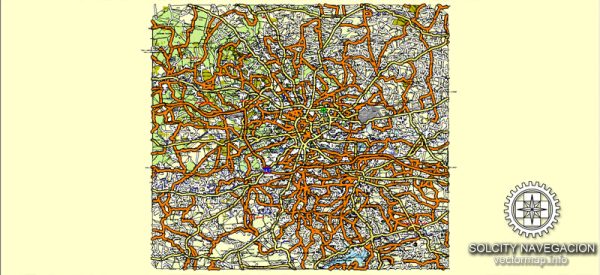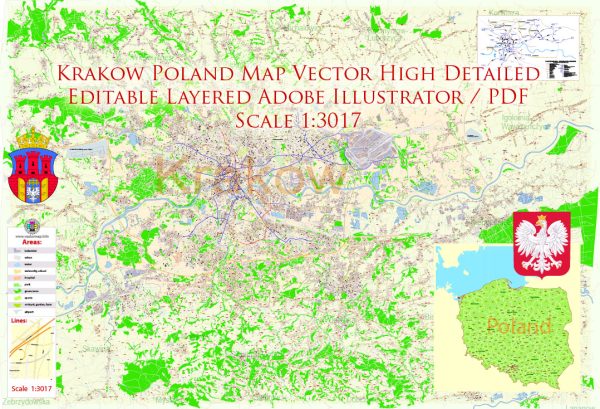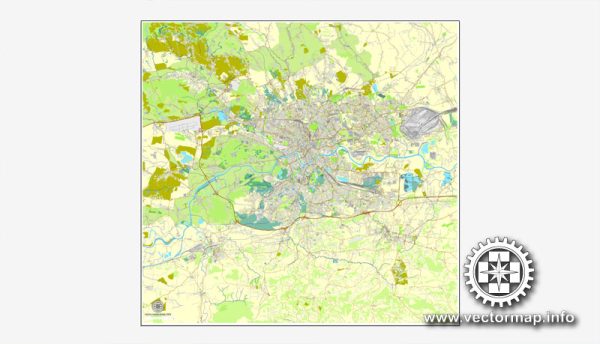Kraków is divided into 18 administrative districts, known as “dzielnice,” which are further divided into neighborhoods and smaller administrative units. Each district has its own unique character and atmosphere. Here is a brief overview of some of Kraków’s districts and neighborhoods:
- Stare Miasto (Old Town):
- The heart of Kraków, known for its historic architecture and landmarks.
- Main Market Square (Rynek Główny) is a bustling center with shops, restaurants, and historical sites.
- Wawel Hill, home to Wawel Castle and Wawel Cathedral.
- Grzegórzki:
- Located east of the Old Town, characterized by a mix of residential and commercial areas.
- Home to the MOCAK (Museum of Contemporary Art in Kraków) and the Schindler Factory Museum.
- Kazimierz:
- The historic Jewish quarter, known for its vibrant atmosphere and cultural richness.
- Synagogues, museums, and unique cafes contribute to the district’s charm.
- Stradom:
- A district between the Old Town and Kazimierz, offering a quieter atmosphere.
- Historic churches and a local market add to its charm.
- Podgórze:
- Located south of the Old Town, across the Vistula River.
- Home to the remnants of the former Jewish Ghetto and the famous Ghetto Heroes Square.
- Dębniki:
- A residential district with a mix of historic and modern architecture.
- Wolski Forest and the Benedictine Abbey on Tyniec are notable attractions.
- Łagiewniki-Borek Fałęcki:
- Home to the Sanctuary of Divine Mercy, an important pilgrimage site.
- Offers a mix of residential and green areas.
- Swoszowice:
- A mostly residential district with suburban characteristics.
- Offers a quieter environment away from the city center.
- Zwierzyniec:
- Located west of the Old Town, known for its green spaces and parks.
- The Kraków Zoological Gardens are a prominent attraction.
- Bronowice:
- A district with a mix of residential and industrial areas.
- Home to the Jagiellonian University’s campus and the AGH University of Science and Technology.
- Czyżyny:
- Known for its diverse architecture, including residential and industrial zones.
- Features the Aviation Museum and the Nowa Huta district.
- Mistrzejowice:
- Primarily a residential district with parks and green spaces.
- Offers a suburban feel with easy access to the city center.
- Bieńczyce:
- Located in the eastern part of Kraków, characterized by a mix of residential and industrial areas.
- Bieżanów-Prokocim:
- Features a mix of residential neighborhoods and industrial zones.
- Home to the Bonarka City Center shopping mall.
- Podgórze Duchackie:
- A district in the southern part of Kraków with a mix of residential and green areas.
- Offers a suburban lifestyle.
- Zabłocie:
- An emerging district known for its post-industrial character.
- Creative spaces, galleries, and trendy venues contribute to its vibrant atmosphere.
- Nowa Huta:
- A planned socialist district built in the communist era.
- Known for its unique architecture, wide boulevards, and the Central Square (Plac Centralny).
- Swoszowice:
- A suburban district with a mix of residential and rural areas.
- Offers a peaceful environment away from the urban hustle.
Each district and neighborhood in Kraków has its own distinct personality, making the city diverse and interesting to explore. Whether you’re interested in history, culture, or modern developments, Kraków has something to offer in every corner.
Vectormap.Net provide you with the most accurate and up-to-date vector maps in Adobe Illustrator, PDF and other formats, designed for editing and printing. Please read the vector map descriptions carefully.




 Author: Kirill Shrayber, Ph.D.
Author: Kirill Shrayber, Ph.D.